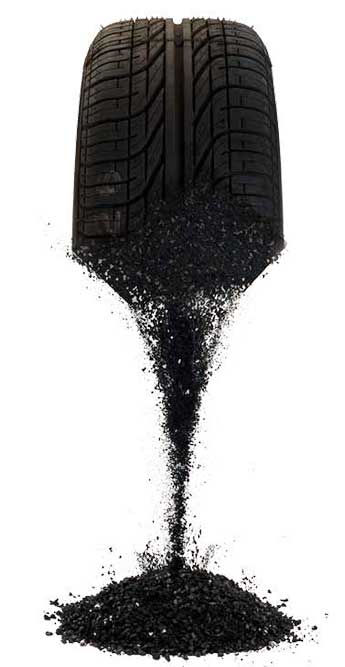Due to the resistant rubber material, the material recycling of Old tires very complex. The industry has high demands on recycled rubber; it must correspond exactly to the respective requirements. In material recycling, used tires are shredded and granulated in shredder and granulate plants gum powder– or processed in granular form. The products obtained from material recycling can be reused, for example, for artificial turf, asphalt or sports fields or sealing materials.
That way Old tires can be separated into its three main components rubber, textile fibers and metal, the used tire must be crushed so that it has a grain size of five millimeters. This is done in three steps: First, a pre-shredding to 50 to 150 mm takes place in the rotary shears or in the two-sleeper shredder. Then the shredded tires are broken down and re-shredded in the granulator. A combination of cutting, tearing and crushing breaks the material down into its individual parts. The grist has a size of 5 to 10 mm. In the third step, fine grinding, the rubber granules are ground to the desired size after the textile fibers and steel have been removed. A distinction is made here between warm grinding and cryogenic grinding. During cryogenic grinding, the process is cooled down to -100°C. The material is made brittle and broken down into its individual parts.
Pyrolysis - chemical recycling
Another way to recycle tires is tire pyrolysis. Pyrolysis is a chemical recovery process in which whole or shredded tires are heated to 400 to 600 degrees in pyrolysis plants in the absence of oxygen, but no combustion takes place. During the pyrolysis process, the components of the tire are thermally decomposed.
A valuable product of tire pyrolysis is carbon black, which is required for the manufacture of tires. The carbon black is recovered from the tires through the pyrolysis process and can be used again for the production of new tires. In addition, gases, oils and coke are released, which can be energetically recycled. Steel is also recovered through pyrolysis and can be fed back into the production process.




